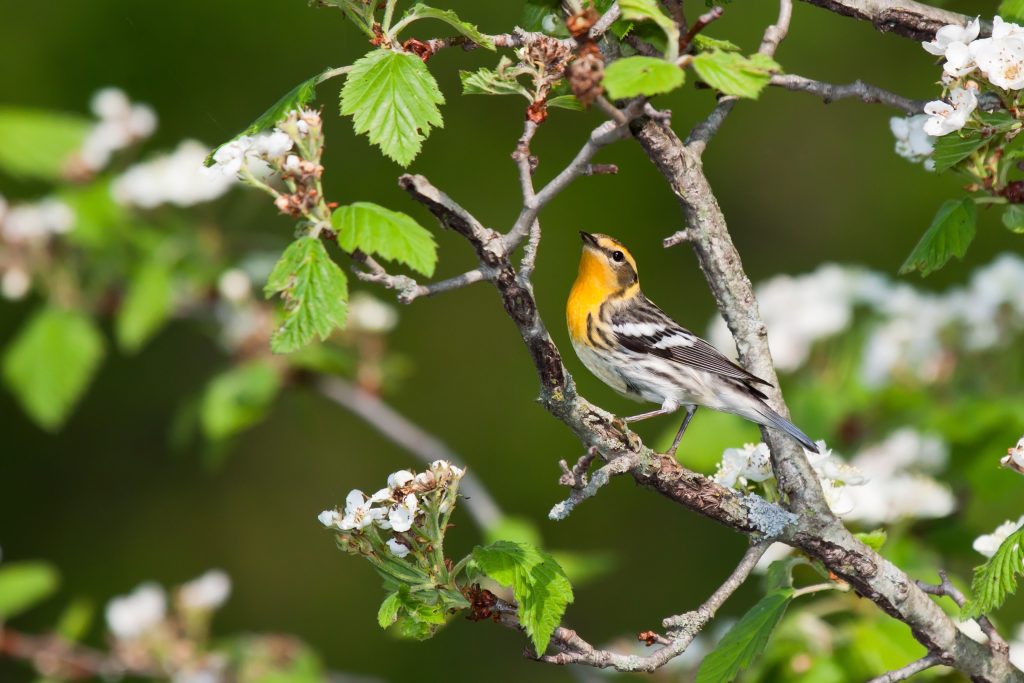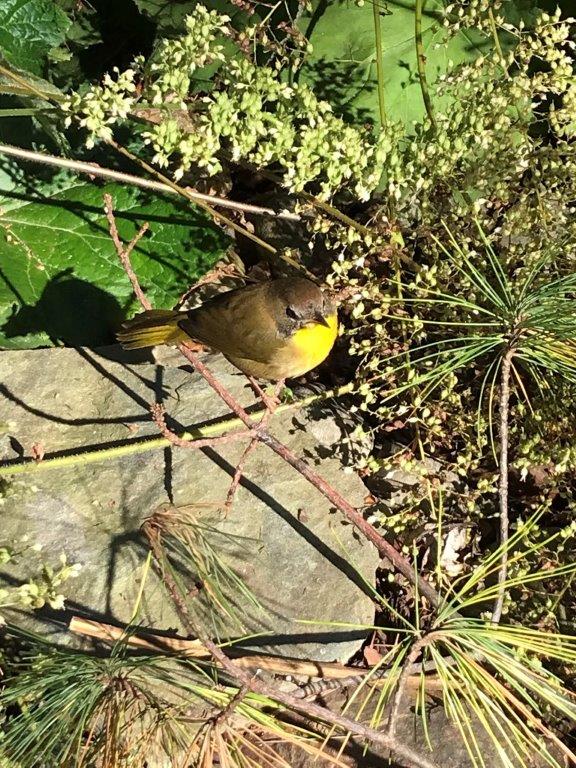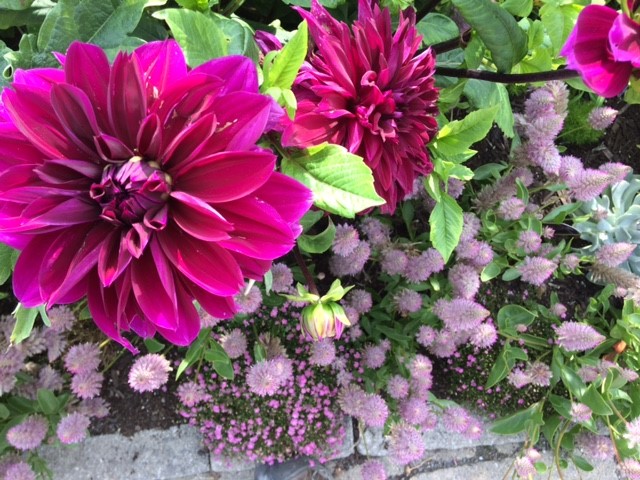With the summer winding down and temperatures beginning their annual slide toward fall, migratory birds are also starting to head back to their southern homes, so this is a great time to get out into nature to see some of our feathered friends. Recently, a guest sent us a picture of a black-throated blue warbler they saw in the Gardens, and it inspired me to do some birding and write a bit about my adventures.
The Fall Birding Forecast
As a bird lover, I often find myself listening exclusively to the birds and nature around me. The other morning, I took a walk down the Vernal Pool Trail and Birch Allée. As I walked, I heard red-breasted nuthatches talking to each other among the high trees and two blue jays in the treetops.
Along the Birch Allée, the sun was shining just right, so I could see the silhouettes of birds in the trees, including ruby-throated hummingbirds flying and chirping just above me. Since it had rained the night before, spider webs were dewy and beautiful in the sun, and the trees looked as though they were sparkling. It felt like such a serene moment, perfectly accented by monarch butterflies making an appearance.
The challenge, of course, is often identifying a bird by sound—it’s fun (and helpful) to know the mnemonics that accompany each bird call. Black-capped chickadees call to each other with a song that sounds like “cheeseburger,” and sometimes they leave out the ending, making it sound like “cheeseburg.” Gray catbirds, who really do sound just like cats, are never mistaken. American goldfinches have a call sounding almost like “potato chip…potato chip.” My favorite bird, the white-breasted nuthatch, sounds like it is saying “yank-yank-yank,” similar to the red-breasted nuthatch, also a Gardens resident.

A blackburnian warbler at the Gardens.

Common yellowthroat
Because memorizing bird calls can be a challenge, there is technology to help. On crystal clear mornings, you can use the Cornell Lab of Ornithology’s Merlin app to help you identify some of the bird calls. I was introduced to this app in my ornithology class in college, and it’s helped me further my birding a lot. You can also report what birds you see and hear through Merlin’s sister app, eBird, a tool birders use to track sightings and see where birds are in real time.
As summer winds down, the forests are getting quieter without the flush of warblers and other migratory songbirds, but not to worry—we still have a multitude of year-round birds! If you make it to the Gardens, I highly recommend stopping and listening for our feathered friends. If you’re curious about the annual migration, definitely check out BirdCast, an amazing tool that forecasts the migration of birds, both near you and around the world, the result of a collaboration among EPA, the National Audubon Society, Cornell Lab of Ornithology, Clemson University Radar Ornithology Laboratory, the Academy of Natural Sciences in Philadelphia, and GeoMarine, Inc.

